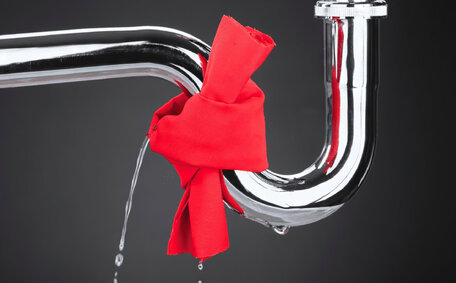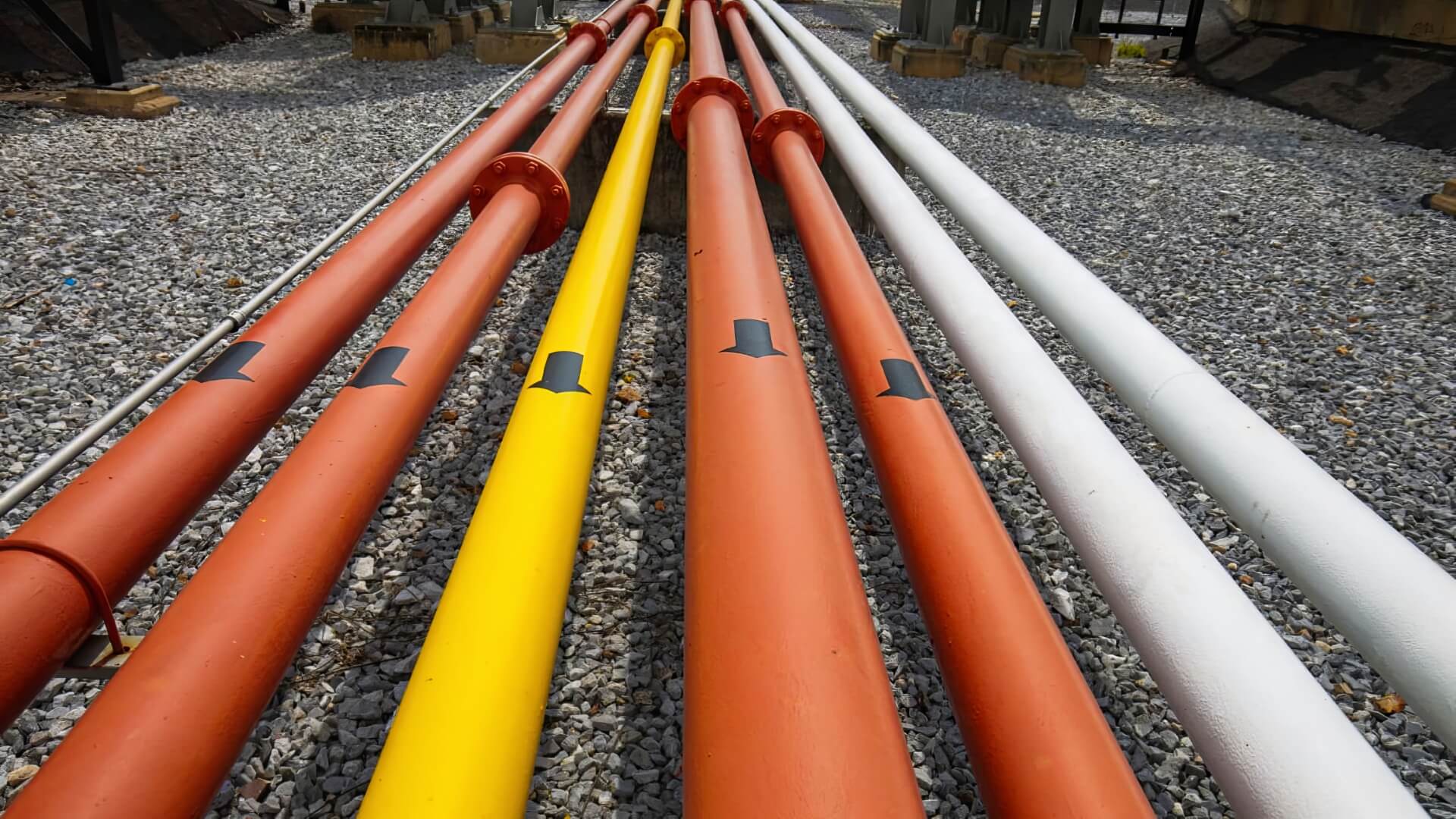Introduction to Pipe Repairs: When Is Action Needed?
Timely intervention is essential to prevent minor pipe damage from escalating into major issues.
Understanding the key differences between these techniques, including their cost-effectiveness, durability and non-invasive nature, can help homeowners make informed decisions when plumbing repairs are required.
With our expertise in both pipe patching and relining, Wetherill Park Plumbing delivers efficient and economical pipe repair solutions without the need for full replacements.
What Is Pipe Patching and How Does It Work?
Pipe patching is a precise method designed to repair localised pipe damage by fixing a resin patch to a damaged pipe section, thus obviating the need for complete pipe replacement. This efficient process is complete within hours and avoids any structural damage.
To carry out pipe patching, the damaged area of pipe is first cleaned and prepared. The resin cures rapidly to form a permanent seal. The hardened repair patch reinstates the pipe’s strength and seals it against leaks.
Pipe patching’s main advantage lies in its ability to repair isolated damage without replacing entire sections. This focused approach is less invasive and more cost-effective compared to full pipe replacements in cases where damage is limited in scope.
What Is Pipe Relining and What Are the Steps?
Relining pipe is a trenchless method that renews existing pipes from the inside out. It involves inserting a resin-saturated liner, effectively a tube inside the damaged pipes, and curing it in place to form a smooth, watertight new 'pipe within a pipe’.
The pipe relining process generally only requires a single access hole to be dug rather than excavating an entire pipe run. The key steps are:
- Gaining entry to the pipes through an access point.
- Using CCTV cameras to inspect the drain pipe and determine the type and length of liner needed.
- Cutting the liner tube to the appropriate length and saturating it with epoxy resin.
- Inserting the liner into the damaged pipes with a winch or inflatable bladder.
- Curing the liner using hot water, steam or UV light so it hardens and bonds to the old pipe.
- Trimming off any excess liner material at entry/exit points.
- Reconnecting lateral joins and sealing access holes.
This method sidesteps trench digging in gardens, driveways, and other areas with limited access. This makes it faster, neater and less invasive than full pipe replacement projects.
Comparing Pipe Patching vs Pipe Relining
When it comes to repairing damaged pipes, pipe relining vs patching, both techniques have their unique advantages and best applications.
Pipe patching is ideal for minor damage limited to short pipe sections.
Pipe relining is preferred for restoring extensive sections and pipes in hard-to-reach areas. As it renews pipes from the inside, it avoids the need for digging or destruction to exterior surfaces.
In terms of suitability for different plumbing issues:
- Pipe patching can address issues like broken pipes with localised damage from freezes, cracks, holes or tree roots.
- Sewer pipe relining allows whole pipe systems affected by rust, corrosion or accumulations of scale/residues to be restored.
Although relining incurs a higher initial cost, it eliminates the necessity for repeated repairs in systems with extensive damage. For sporadic 'spot fixes’, patching is a cost-effective solution for minor damages.
We recommend contacting a professional plumber for on-site assessments. This helps determine if patching discrete areas of damage or relining entire pipe lengths is the most appropriate pipe repair method for the issue at hand.
Cost and Budget Analysis
Licensed plumbers typically charge from $150 to $300 for pipe patching, depending on the size of the repair. Conversely, pipe relining costs for an average residential home range from $3,000 to $5,000. However it negates the need for future repairs over time.
Although pipe relining demands a greater initial outlay, it proves more cost-efficient over time than repeatedly addressing failing patched areas. For extensively damaged sewer pipe lines with issues throughout, relining prevents the need to continuously dig up and repair multiple sections over coming years.
Factoring long term savings, pipe relining can therefore save thousands in comparison to full pipe replacement. Trenchless technology also avoids expensive landscaping restoration work required with open excavations.
Homeowners unsure between replacement and restoration should seek an on-site assessment of the damaged pipe system. This allows a detailed analysis weighing up both options - either patching discrete problem areas or relining entire pipe lengths. Professional advice takes the guesswork out of this decision.
Pipe Patching Pros and Cons
Pros of Pipe Patching
- Cost-effective for minor isolated damage
- Rapid repairs taking only a few hours
- Avoids the need to replace entire pipe sections
- Less destructive than pipe replacement vs a full excavation process
- Maintains integrity of surrounding structures/landscaping
Cons of Pipe Patching
- Inappropriate for widespread systemic damage
- Greater chance of failure, necessitating future re-patching
- Unable to address full-system issues like accumulations of scale
- Not feasible for inaccessible pipe locations
- Repeated repairs can add up cost-wise vs pipe relining
When it comes to pipe patching vs replacement, weighing up the pipe’s location and accessibility along with the extent of damage is important. While suitable for minor repairs, pipe relining is the durable solution for more significant problems.
Pipe Relining Pros and Cons
Pros of Pipe Relining
- Prevents future damage from tree roots and ground shifts
- Long-lasting solution that can last 50+ years
- Trenchless methods prevent upheaval from excavations in your yard.
- Saves money compared to full pipe replacement projects
- Rapid installation process with minimal disruption
Cons of Pipe Relining
- Higher upfront cost than pipe patching
- Limited to pipes of sufficient structural integrity
- Supplementary access point may be needed for long drain lines
- Not feasible for severely collapsed/damaged pipes
- Lateral connections need to be reinstated after relining
For extensive pipe damage beyond isolated problem areas, pipe relining provides a comprehensive long-term restoration solution. By renewing entire pipe systems from the inside, it prevents future issues like tree root invasion for decades to come.
What Are the Long Term Implications?
Pipe relining stands out as the long-term, low-maintenance option. Correctly installed pipe liners have an expected lifespan of 50+ years. As the epoxy resin bonds securely with the old pipe walls, it prevents future root ingress and soil movement damage.
Alternatively, areas repaired via pipe patching have a higher risk of failure over time, potentially requiring recurrent repairs every 5-10 years. For extensive system damage, multiple patching repairs can end up costing more over a period of decades than a single upfront pipe relining project.
Whilst relined pipes typically require little maintenance, patched areas merit periodic inspections to preempt leaks or failures. Seeking professional drainage assessments every 1-2 years enables timely repairs if issues emerge.
Pipe relining thus prevents the need for costly emergency repairs, extensive drainage excavations, and pipe replacements for years ahead. While not always necessary, for homeowners planning to stay long-term in a property affected by widespread pipe damage, relining can be viewed as a valuable investment.
Minimizing Disruption to Your Property
A key advantage of both pipe relining and patching is that they avoid major disruption to properties compared to full pipe replacement projects. As trenchless techniques that renew pipes from either the inside or outside, they prevent the need to dig lengthy trenches across gardens, driveways or basement floors.
Pipe relining in particular, restores entire pipe systems via small access holes rather than requiring large excavated areas. Resin-saturated liners are inserted into original pipes before being inflated and cured in place. This approach leaves surrounding structures, landscaping and hardscaping materials like retaining walls, fences and paving undisturbed.
For pipe patching, only the localised damaged section is exposed and repaired. Epoxy resins can be swiftly applied and cured with minimal impacts beyond the repair site. Surfaces are then restored to original conditions.
By utilising pipe patching and relining as opposed to traditional pipe replacement methods, homeowners can avoid expenses and inconveniences associated with extensive digging, surface destruction and complex restoration projects.
Preventing Future Pipe Damage
Homeowners can adopt preventive measures to mitigate pipe damage over time:
- Arrange professional drainage inspections every 1-2 years to identify potential issues early.
- Repair cracks or leaks as soon as they appear to prevent worsening.
- Install root shields around external drainage pipes.
- Avoid pouring fats/oils down sinks which solidify and block pipes.
- Update old steel pipes susceptible to rusting.
- Ensure downpipe extensions prevent soil erosion around foundations.
Taking proactive maintenance measures reduces the likelihood of extensive pipe damage. This minimises the risk of major failures requiring urgent repairs down the track. Contacting a professional plumber for regular servicing provides both preventative care and expert advice tailored to your property’s piping system.
Professional Assistance: When To Call a Plumber
Recognising the right moment to call professional plumbers can save you from turning small issues into major concerns. Signs it’s time to contact a licenced plumber include:
- Persistent clogged or slow-draining pipes
- Noticable damp patches or cracked pipes
- Detectable gas leaks or pipe corrosion
- Frequent sewer odours in the home
- Backed up sewer lines or ongoing blockages
Our expert team at Wetherill Park Plumbing assesses pipe damage to provide dependable solutions. We offer a wide range of services, including:
- Pipe inspections and maintenance
- High-pressure blocked drain clearing
- Pipe patching and relining
- Trenchless pipe replacement
- CCTV drain camera inspections
For immediate assistance from our professional local plumbers, contact Wetherill Park Plumbing at 1300 349 338 or email jobs@wetherillparkplumbingservices.com.au.






